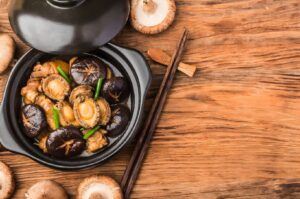Singapore’s vibrant food scene wouldn’t be complete without the aromatic spices and complex flavours that define Malay cuisine in Singapore. A hallmark of Malay meals is the inclusion of various side dishes, allowing diners to enjoy a diverse and customizable array of meats, vegetables, and eggs with their main course.
As one of the foundational pillars of the nation’s culinary identity, Malay food reflects centuries of cultural exchange, migration, and adaptation. From the early Malay settlements to the modern multicultural society we know today, traditional Malay cooking has evolved whilst preserving its authentic essence.
The generous use of coconut milk, fragrant spice pastes, and bold sambal creates a symphony of flavours that captures the warmth and hospitality of Malay culture, enriched by Chinese and Indian influences and making it an indispensable part of any comprehensive Singapore food guide. Whether you choose to eat these dishes for lunch or dinner, the experience is always enhanced by the lively atmosphere proceeding the meal.
Iconic Malay Dishes You Must Try
Nasi Lemak: Singapore’s Beloved National Dish
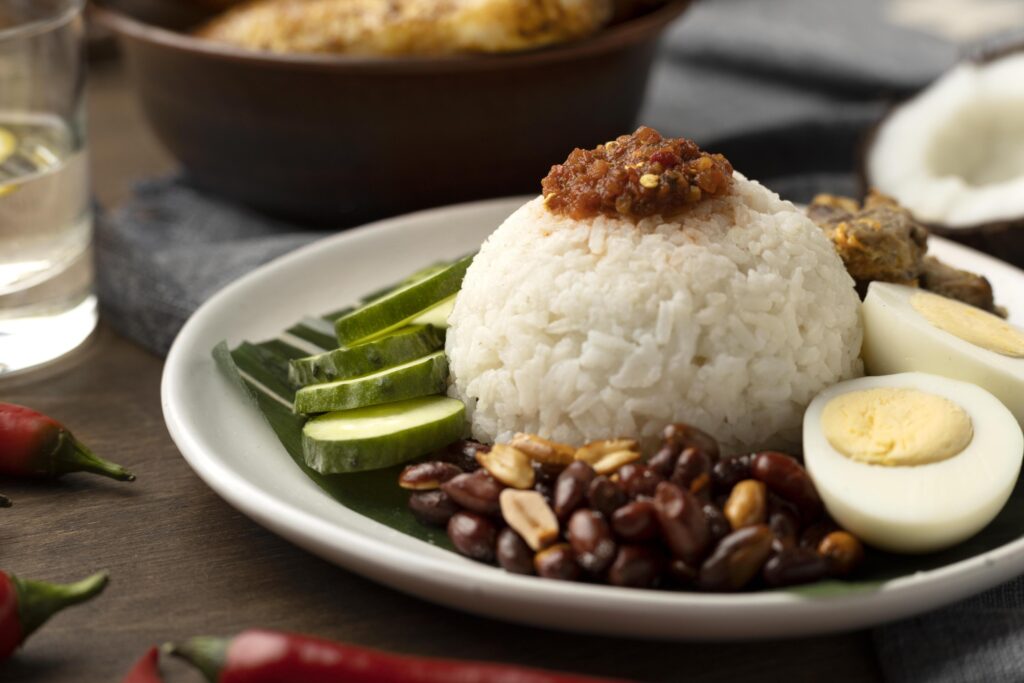
No exploration of the best Malay food in Singapore is complete without nasi lemak, considered Malaysia’s national dish and often hailed as the nation’s unofficial national dish. This simple yet flavorful dish centers on fragrant coconut rice cooked with pandan leaves, absorbing the creamy richness of coconut milk. The rice is accompanied by an array of sides that create perfect harmony on the plate.
The star is the sambal – a fiery chili paste balancing sweet, spicy, and savory notes, made through slow-cooking for deep, complex flavors. Alongside sambal are crispy fried anchovies, roasted peanuts, hard-boiled egg, and fresh cucumber slices. Many stalls add fried chicken wings, rendang, or curry vegetables.Some traditional versions include a half boiled egg, enhancing the experience. Nasi lemak is enjoyed at any time of day and is sometimes served on a banana leaf for added aroma and authenticity.Rendang: The Art of Slow-Cooked Perfection

Beef rendang is a pinnacle of traditional Malay cooking, slow-braised in coconut milk and spice paste until the beef is coated in a dark, caramelised glaze. Originating from West Sumatra, Indonesia, beef rendang is the most celebrated version among various meat rendangs.
Beyond its rich taste, rendang served as a preservation method in tropical climates. Its complex spice paste includes galangal, lemongrass, turmeric, chillies, and candlenuts, which develop deep flavours during the long cooking process.
Satay: Grilled Perfection with Aromatic Peanut Sauce
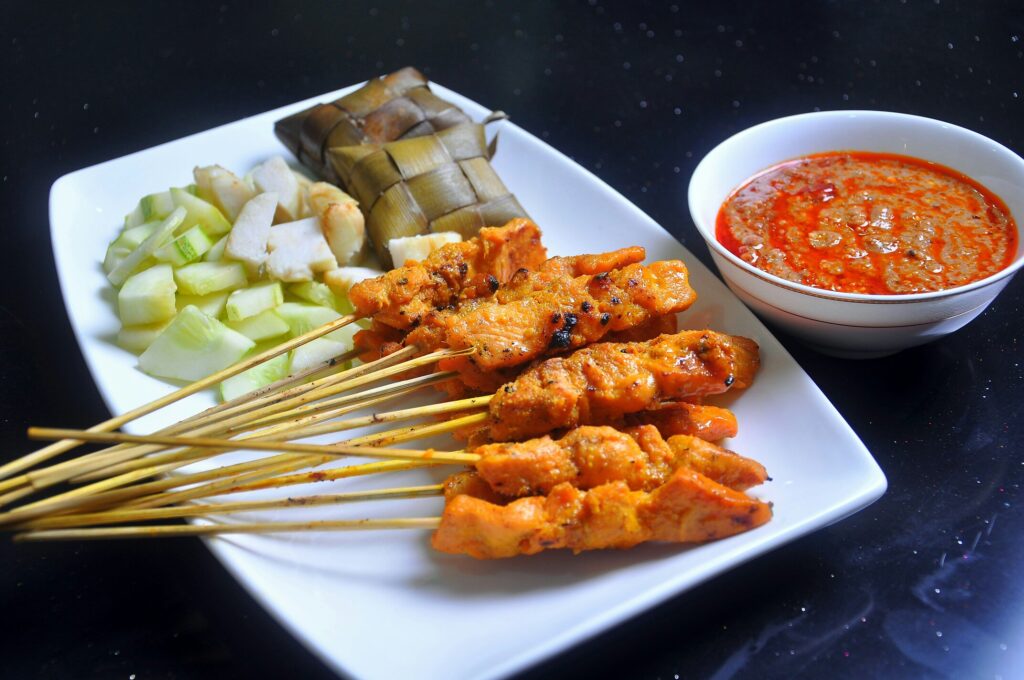
Few dishes capture the essence of Southeast Asian street food like satay. These grilled skewers of marinated meat showcase the blend of technique and flavour defining authentic Malay restaurants. The marinade—a mix of turmeric, lemongrass, galangal, and other spices—tenders the meat during grilling.
Skewers are cooked over charcoal fires, imparting a smoky flavour as the meat caramelises while staying juicy. The accompanying peanut sauce, a creamy blend of ground peanuts, spices, and palm sugar, balances sweetness with subtle heat.at.
Mee Rebus: Comfort in a Bowl

Mee Rebus is a comforting Malay dish featuring yellow wheat noodles in a reddish-brown gravy made from sweet potatoes, dried prawns, and aromatic spices, sometimes enhanced with soy sauce. Traditional toppings include bean sprouts, hard-boiled eggs, deep fried tofu for crispiness, and fresh lime wedges for a burst of lime juice. Each element adds texture and flavour, showcasing how Malay cuisine transforms simple ingredients into a harmonious meal.
Asam Pedas: A Tangy-Savory Classic

Asam Pedas, believed to have originated in Melaka as a traditional dish of the Malay and Peranakan communities, is a spicy and sour fish stew essential for exploring Malay cuisines in Singapore. Meaning “sour and spicy,” it features a tangy tamarind-based gravy balanced with fresh chilies and fragrant spices. Typically made with fish like stingray, mackerel, or snapper, variations include seafood and vegetables.
Its distinctive flavor comes from a blend of lemongrass, galangal, belacan (shrimp paste), and torch ginger flower, combined with tamarind and fresh herbs. Tomatoes and onions add depth, while chili and garlic in the spice paste build a bold, aromatic base. Some recipes add vinegar to balance the tangy and savory notes. The gravy acts as a spicy sauce coating the fish, delivering a perfect mix of sour, spicy, and umami. A staple in Malay kitchens and restaurants, Asam Pedas awakens the palate and brings people together over a flavorful communal meal.
Where to Find Authentic Malay Food in Singapore
Traditional Heartlands: Kampong Glam and Geylang Serai
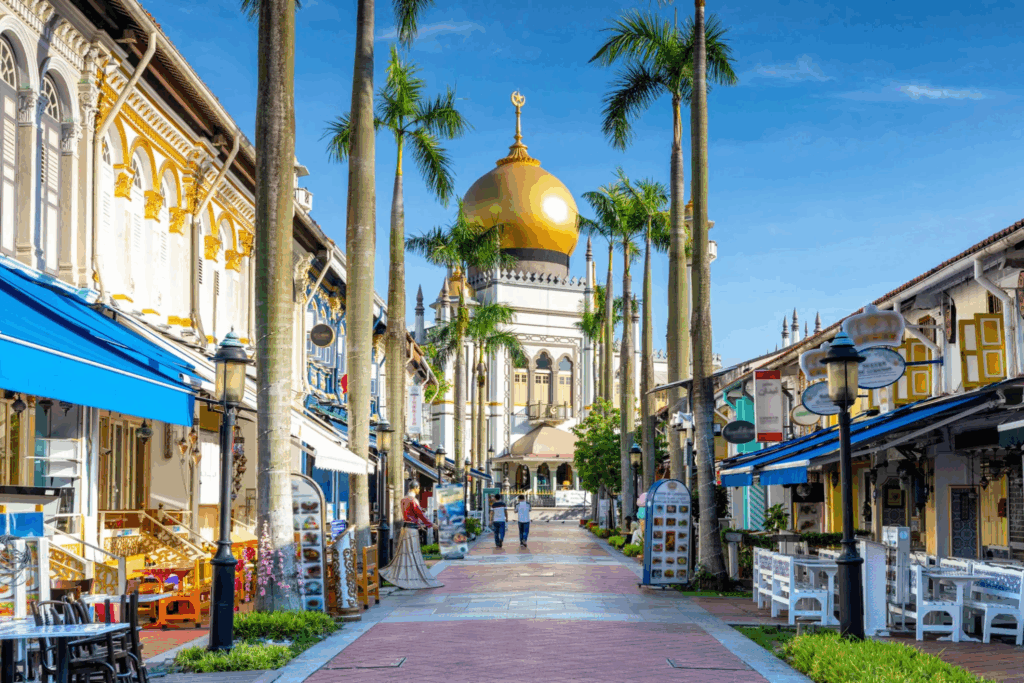
Kampong Glam stands as the historic heart of Malay culture in Singapore, where authentic Malay restaurants continue traditional recipes passed down through generations. Arab Street and Haji Lane offer numerous establishments serving everything from casual nasi lemak to elaborate ayam penyet. The area’s rich cultural atmosphere enhances the dining experience, allowing visitors to immerse themselves in Malay heritage whilst enjoying exceptional food.
Geylang Serai represents another essential destination for Malay cuisine enthusiasts. This vibrant neighbourhood comes alive during Ramadan, when temporary stalls create a festive food market atmosphere. Year-round, the area hosts numerous family-run establishments that maintain authentic cooking methods and recipes.
Hawker Centres: The Democratic Dining Experience
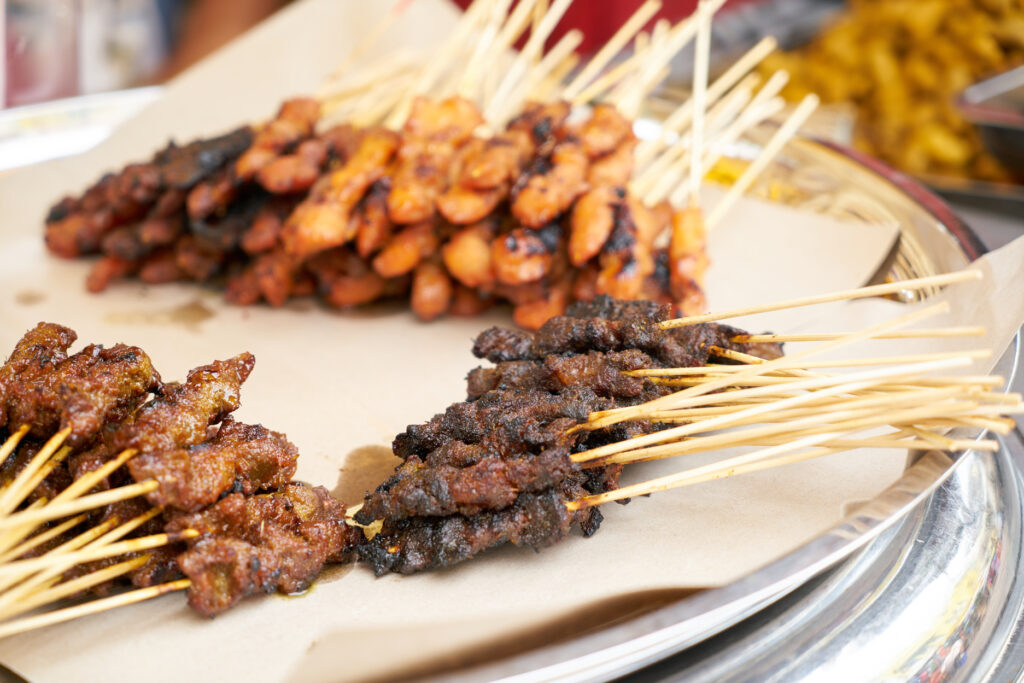
Singapore’s hawker centres offer an inclusive platform for enjoying authentic Malay cuisine, where family-run stalls serve up time-honoured recipes passed down through generations. Notable spots like Adam Road Food Centre, home to the beloved Selera Rasa Nasi Lemak, Maxwell Food Centre, known for its Traditional Family Cuisine, and Satay Street at Lau Pa Sat, showcase how traditional Malay cooking thrives in a communal, vibrant dining setting. These venues exemplify the fusion of heritage and accessibility, making exceptional Malay food available to all.
Modern Interpretations

Contemporary restaurants like Hjh Maimunah and The Malayan Council bridge traditional and modern approaches, serving authentic dishes in comfortable settings whilst maintaining rigorous standards for ingredients and preparation methods.
In addition to savory offerings, these modern Malay restaurants often feature traditional dessert options such as cendol—a popular sweet treat made with shaved ice and sweetened with palm sugar syrup. Dessert holds an important place in Malay cuisine, and its presence in contemporary dining highlights both cultural significance and a commitment to authentic flavors.
Celebrating Singapore’s Culinary Heritage
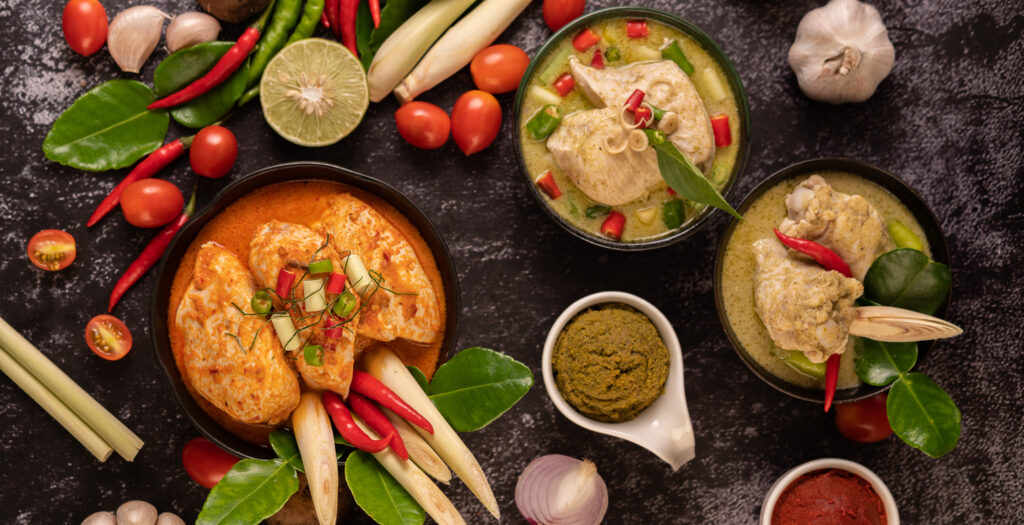
Malay cuisine is more than just food; it embodies Singapore’s multicultural spirit. These iconic Malay dishes reflect migration, adaptation, and cultural exchange while offering comfort and heritage connection. From hawker centres to Kampong Glam’s historic streets, every bite links diners to centuries of culinary evolution.
The complex flavours, careful preparation, and communal dining make Malay cuisine key to understanding Singapore’s culture. Exploring these rich tastes means participating in a living tradition that honors its roots while evolving.
Ready for your Malay food adventure? Share your favourite Malay dining spots in Singapore with us! Whether a hidden gem in Geylang Serai or a beloved sambal recipe, we want to hear about your journey through Singapore’s vibrant Malay food scene.
